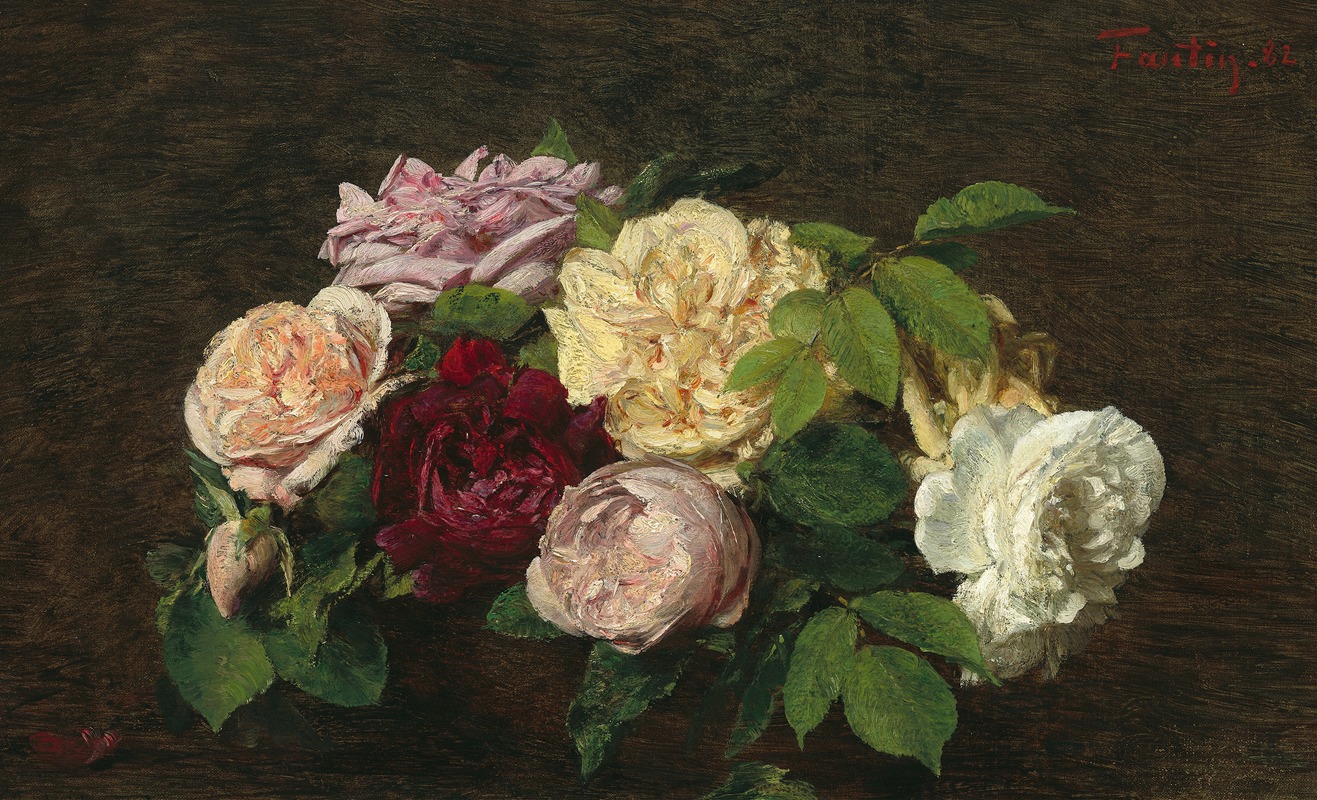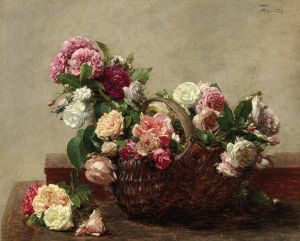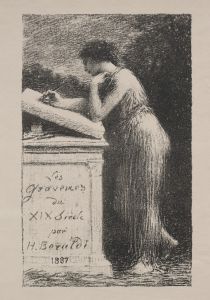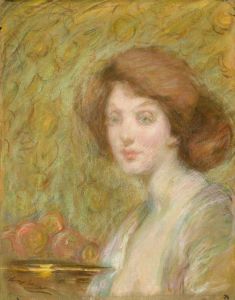
Roses de Nice on a Table
A hand-painted replica of Henri Fantin-Latour’s masterpiece Roses de Nice on a Table, meticulously crafted by professional artists to capture the true essence of the original. Each piece is created with museum-quality canvas and rare mineral pigments, carefully painted by experienced artists with delicate brushstrokes and rich, layered colors to perfectly recreate the texture of the original artwork. Unlike machine-printed reproductions, this hand-painted version brings the painting to life, infused with the artist’s emotions and skill in every stroke. Whether for personal collection or home decoration, it instantly elevates the artistic atmosphere of any space.
Henri Fantin-Latour, a renowned French painter, is celebrated for his exquisite still life paintings and portraits. One of his notable works is "Roses de Nice on a Table," which exemplifies his mastery in capturing the delicate beauty of flowers. Fantin-Latour was born in 1836 in Grenoble, France, and he developed a keen interest in art from a young age. He studied at the École des Beaux-Arts in Paris and was influenced by the works of the Old Masters, which is evident in his meticulous attention to detail and composition.
"Roses de Nice on a Table" is a still life painting that features a bouquet of roses arranged on a table. The painting is characterized by its soft, naturalistic depiction of the flowers, showcasing Fantin-Latour's ability to render the subtle variations in color and texture. The roses, likely sourced from Nice, a city known for its beautiful blooms, are depicted with a sense of realism that captures their ephemeral beauty. The composition is simple yet elegant, with the roses placed in a vase that sits on a plain table, allowing the viewer to focus entirely on the flowers themselves.
Fantin-Latour's approach to still life painting was influenced by the Dutch and Flemish masters of the 17th century, whose works he admired for their precision and attention to detail. However, he brought a distinct softness and sensitivity to his own paintings, which set them apart from those of his predecessors. In "Roses de Nice on a Table," this is evident in the way he captures the play of light on the petals and leaves, creating a sense of depth and dimension.
Throughout his career, Fantin-Latour was known for his dedication to still life painting, a genre that was often overlooked in favor of more dramatic historical or mythological subjects. Despite this, he gained recognition for his ability to elevate the still life to a form of high art, and his works were highly sought after by collectors and art enthusiasts. His paintings were exhibited at the Paris Salon, where they received critical acclaim for their technical skill and aesthetic beauty.
Fantin-Latour's still lifes, including "Roses de Nice on a Table," are celebrated for their timeless quality and their ability to capture the essence of their subjects. His work has been praised for its harmonious composition and the subtle interplay of color and light, which create a sense of tranquility and elegance. Today, Fantin-Latour's paintings are held in high regard and can be found in major art museums and collections around the world.
"Roses de Nice on a Table" exemplifies Fantin-Latour's contribution to the art of still life painting and his enduring legacy as one of the foremost painters of his time. His ability to transform simple arrangements of flowers into works of profound beauty continues to captivate viewers and inspire artists to this day.


















